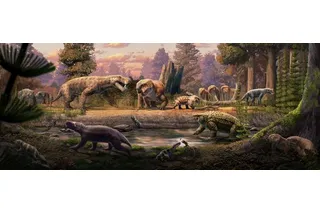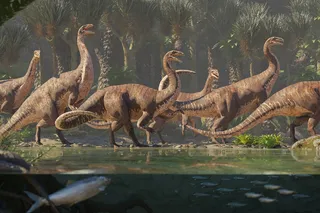The first thing to you'll notice about this pterosaur is its smile. According to a new paper published in Paläontologische Zeitschrift (PalZ), researchers recently identified this strange species, which had 480 of thin, hooked teeth in its flared, flat jaws.
Since the identification of the first pterosaur fossils in the formations of limestone in Germany in the 1700s, paleontologists have found hundreds of separate species of these ferocious flyers, all with their own shapes, sizes and lifestyles.
Some were small, while others weren’t. Some possessed wide wings, and some possessed slimmer, slenderer ones. Some were stuck with an awkward slouching posture, whereas others stood upright and walked, waded and swam whenever they weren’t soaring through the sky. And while some of these almost-dinosaurs benefitted from an abundance of tiny teeth, others boasted a smattering of big ones or no teeth at all.
Read More: Newly Discovered Dinosaur Likely Resembled a ...















